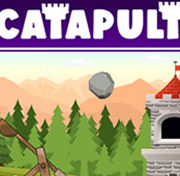Speed, Distance and Time, Physical Science Game
What is the relationship between speed, distance, and time? Well, speed equals distance divided by time. Speed measures how quickly an object moves from one place to another. It is equal to the distance traveled divided by the time taken. Basically, we can calculate speed if we know the distance traveled and the time taken. See how the concepts relate? Now, think about an Olympic sprinter and how time is critical to determining whether they are first or not. Play this science game to learn the relationship between speed, distance, and time.
Learn about the Dynamics of Speed, Distance, and Time through Engaging Math Games
The intricate relationship between speed, distance, and time has long been a cornerstone in mathematics, especially when it comes to teaching children the principles of motion. Understanding this relationship is not just about solving math problems but also about grasping real-world applications. What better way to introduce these concepts than through interactive games designed specifically for children? Dive into the fascinating world of speed distance time calculations and discover the joy of learning math the fun way.
Understanding the Fundamental Relationship
Before diving into the games, it's essential to grasp the basics. The relationship between speed, distance, and time can be summarized by the formula: Speed = Distance/Time. When any two of these elements are known, calculating the third becomes straightforward. Whether you're calculating distance traveled during a summer road trip or determining the calculating speed of a racing car, this formula is the key.
The Interactive Approach: Games to the Rescue!
Textbooks and classroom chalkboards can sometimes fail to capture the imagination of young minds. Here's where the magic of interactive math games steps in. Through gamified experiences, children can visualize real-life scenarios, which make abstract concepts like distance and speed more relatable.
Take, for instance, the Speed, Distance, and Time Physical Science Game available on ESL Games Plus. This game offers players various challenges that test their understanding of the relationship between speed, distance, and time. Not only do children get to apply their math skills, but they also engage in an adventurous journey, navigating various scenarios that require swift calculations and critical thinking.
Broadening Horizons with More Math Games
If your young one has a budding interest in math and science, it doesn't stop at speed and distance calculations. ESL Games Plus Math Games is a treasure trove of engaging mathematical games that cover a broad spectrum of topics. From basic arithmetic to more complex geometrical problems, the platform is a haven for any child eager to learn and play simultaneously.
Why Opt for Game-Based Learning?
While traditional methods of teaching have their merit, game-based learning offers a unique blend of education and entertainment. Concepts that might seem daunting or complex are broken down into enjoyable challenges, making the learning process more digestible and fun. When children engage with concepts like calculating distance and calculating speed through games, they're more likely to retain the information and apply it confidently.
In Conclusion
The world of math opens up in exciting and unexpected ways when children are provided with the right tools and resources. By combining education with entertainment through games, we ensure that children not only learn but also develop a genuine love and curiosity for the subject. Dive into the world of speed, distance, and time today, and let the mathematical adventure begin!"
Mechanics
The Mechanics of Speed is an essential part of physics, and the speed of an object is one of the most significant factors influencing its performance. There are two ways to measure speed: instantaneous speed and average speed. The latter is more important, as it explains the difference between the two. The average speed of a 100m sprint is a function of time, while the latter is the inverse of the average.
Firstly, you should understand the difference between speed and velocity. While both terms have similar meanings, they are not the same thing. The former refers to the rate at which an object covers a certain distance. The latter, however, has a direction. Likewise, the former is the rate at which an object changes its position relative to a given time. In simple terms, the greater the displacement, the faster the object is moving.
Techniques
Scientists study different types of speed. One type is linear speed, which describes the speed of an object travelling in a straight line. It can be calculated by applying Newton's laws of motion. Usually, scientists study the speed of an object at a particular time, such as when a boy is walking. This speed would cause the boy to change his position by two meters in a second. Another type is called instantaneous speed, which is measured at a specific moment. The difference between the two is that when an object falls, there is friction.
The average speed of an object can be calculated by dividing the distance it has covered by the time it took it to travel. However, the calculation of the velocity is more complicated. It can be done using different methods, depending on the information provided by the motion. Distance-time graphs are also helpful for calculating the speed of an object. It is useful to know the average speed of an object if you have a good idea of how much time it took it to travel.










